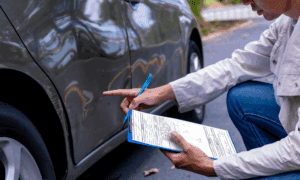If you’re like many people, saving money might seem like an impossible task. Whether you’re struggling with debt, preparing for unexpected expenses, or thinking about your retirement, saving more while spending less often feels like a constant challenge. The good news is, even small changes to how you manage your finances can make a big difference over time. And you don’t need to completely overhaul your lifestyle to start saving—sometimes, it’s the little, consistent changes that add up the most.
Many people have turned to programs like the Freedom Debt Relief reviews to learn how to get a handle on their finances and get rid of debt. While those programs can be helpful, there are plenty of things you can do on your own to reduce your spending and save more money. Let’s dive into some practical tips that can help you keep more of your hard-earned cash, no matter what financial situation you’re facing.
Start with a Realistic Budget
The foundation of saving money is creating and sticking to a budget. Without a budget, it’s easy to overspend and not realize where your money is going. Start by listing all your sources of income and then track your necessary expenses (rent, utilities, groceries, etc.). After that, set aside a portion of your income for savings.
Once you have a clear picture of your income and essential expenses, identify areas where you can cut back. Maybe you can reduce your entertainment spending or find a cheaper grocery store. The goal isn’t to deprive yourself, but to make intentional decisions about where your money goes. A realistic budget will help you live within your means while still allowing you to save.
Cut Back on Impulse Spending
Impulse purchases are one of the biggest culprits when it comes to overspending. Whether it’s a coffee on your way to work or an impulse buy while online shopping, these small purchases add up over time. One way to tackle this is by practicing the “24-hour rule.” If you find something you want to buy but don’t necessarily need, wait 24 hours before making the purchase. This gives you time to think about whether it’s really worth the money.
Another approach is to keep your shopping trips intentional. Make a list before you head to the store or sit down to shop online, and stick to it. Avoid window shopping or browsing online for things you don’t need. This will help you avoid making spontaneous purchases that might break your budget.
Take Advantage of Discounts and Coupons
Coupons and discounts might seem old-fashioned, but they’re still an effective way to save money. In fact, using coupons, finding sales, or using cash-back apps can really add up over time. Before you make a purchase, take a few minutes to search for any discounts or deals. Many retailers offer email sign-up discounts, or you can use apps like Honey, Rakuten, or RetailMeNot to find special offers.
Even if you don’t think a deal is much, saving $5 here and $10 there can add up quickly. It’s also helpful to plan your shopping around sales or clearance events. For example, buy your clothes or holiday gifts in advance during seasonal sales to save money in the long run.
Simplify Your Subscriptions
We often have multiple subscriptions for things like streaming services, magazines, gym memberships, and apps. Over time, we may forget about some of these services, and they can quietly drain your bank account. To save more money, review all your subscriptions and ask yourself if you’re really using them.
Consider canceling the ones you don’t need or use frequently. If you can’t give up a subscription, see if you can downgrade to a less expensive plan or share with friends or family to split the cost. This simple step can free up a surprising amount of cash each month that you can put into savings or toward paying down debt.
Automate Your Savings
One of the easiest ways to save money is by setting up automatic transfers to a savings account. You can have a specific amount of money taken out of your checking account each month and deposited into your savings account before you even have a chance to spend it. Automating your savings makes it easier to stick to your goals, because you’re not tempted to spend the money first.
If you’re unsure how much to save, start with a small, manageable amount and increase it over time. Even setting aside $25 or $50 each month will add up over the course of a year. Over time, you’ll develop a habit of saving without even thinking about it.
Cook at Home Instead of Eating Out
Eating out can be a major expense, especially if you’re dining out multiple times a week. While it’s tempting to grab lunch or dinner on the go, it’s much cheaper to cook at home. By planning your meals ahead of time and cooking in bulk, you can save money and eat healthier, too.
Meal prepping on the weekends can help you avoid the temptation to grab fast food when you’re tired after work. You can also pack your lunch instead of buying it at work, which can save you a significant amount of money throughout the month. The more you cook at home, the more money you’ll save.
Avoid Debt and Pay It Down
One of the best ways to spend less and save more is to avoid accumulating more debt. Credit card debt, in particular, can be especially harmful to your finances because of high interest rates that cause your debt to grow quickly. If you’re currently dealing with credit card debt, it’s important to pay it down as soon as possible.
If you have high-interest credit cards, consider transferring your balance to one with a lower rate or consolidating your debt. Avoid using credit cards unless you can pay them off in full each month. By focusing on reducing your debt, you’ll be able to free up more money for saving.
Review Your Insurance Policies
Insurance is a necessary expense, but you might be paying more than you need to. Take some time to review your insurance policies—whether it’s for health, auto, home, or life—and shop around for better deals. You might be able to save money by switching providers or adjusting your coverage.
For example, if you have a high deductible health plan, consider switching to a lower deductible if it fits within your budget. Similarly, bundling your auto and home insurance can often save you money. Reviewing and adjusting your insurance regularly can help you find savings without sacrificing necessary coverage.
In Conclusion: Small Changes Can Lead to Big Savings
Spending less and saving more doesn’t require drastic changes—it’s about making small, consistent adjustments to your habits. By budgeting carefully, cutting back on unnecessary purchases, and automating your savings, you can make significant strides toward a more secure financial future. Whether you’re saving for a rainy day, preparing for retirement, or paying off debt, these tips can help you build a better financial foundation, one step at a time. The key is to start with manageable changes, stay consistent, and celebrate the progress you make along the way.





























